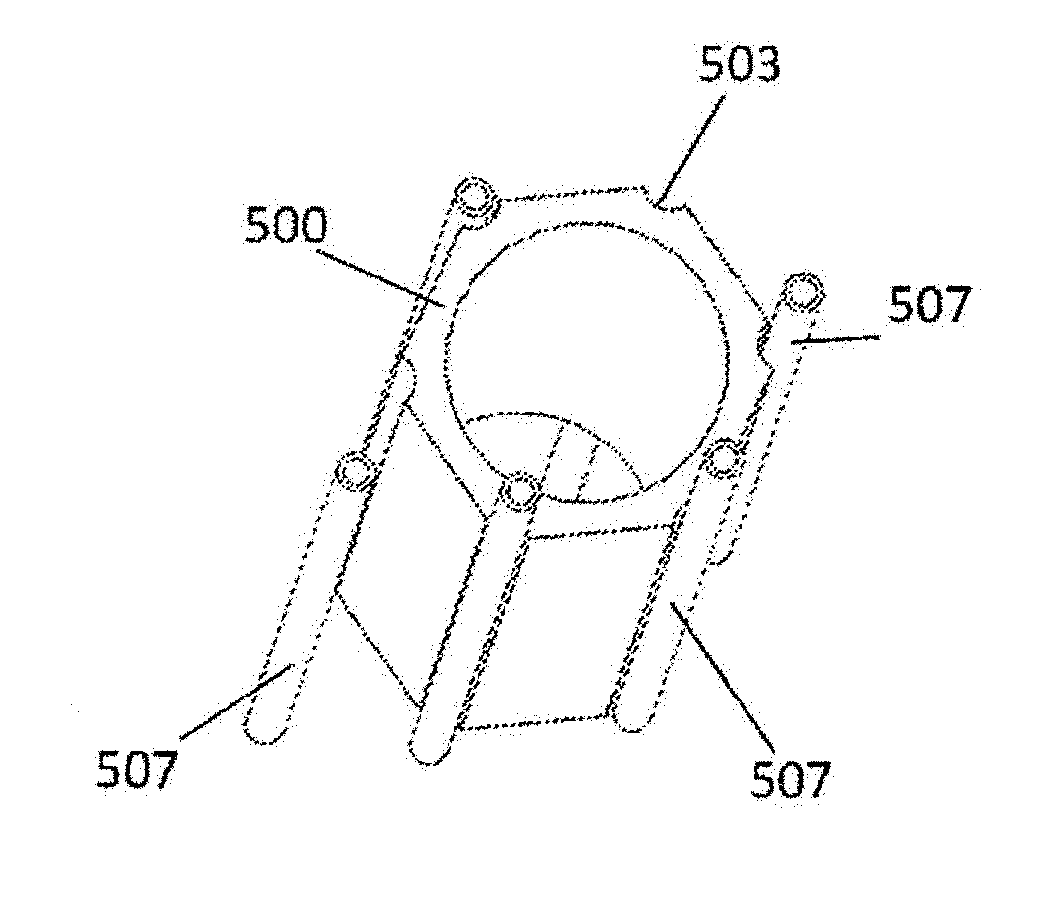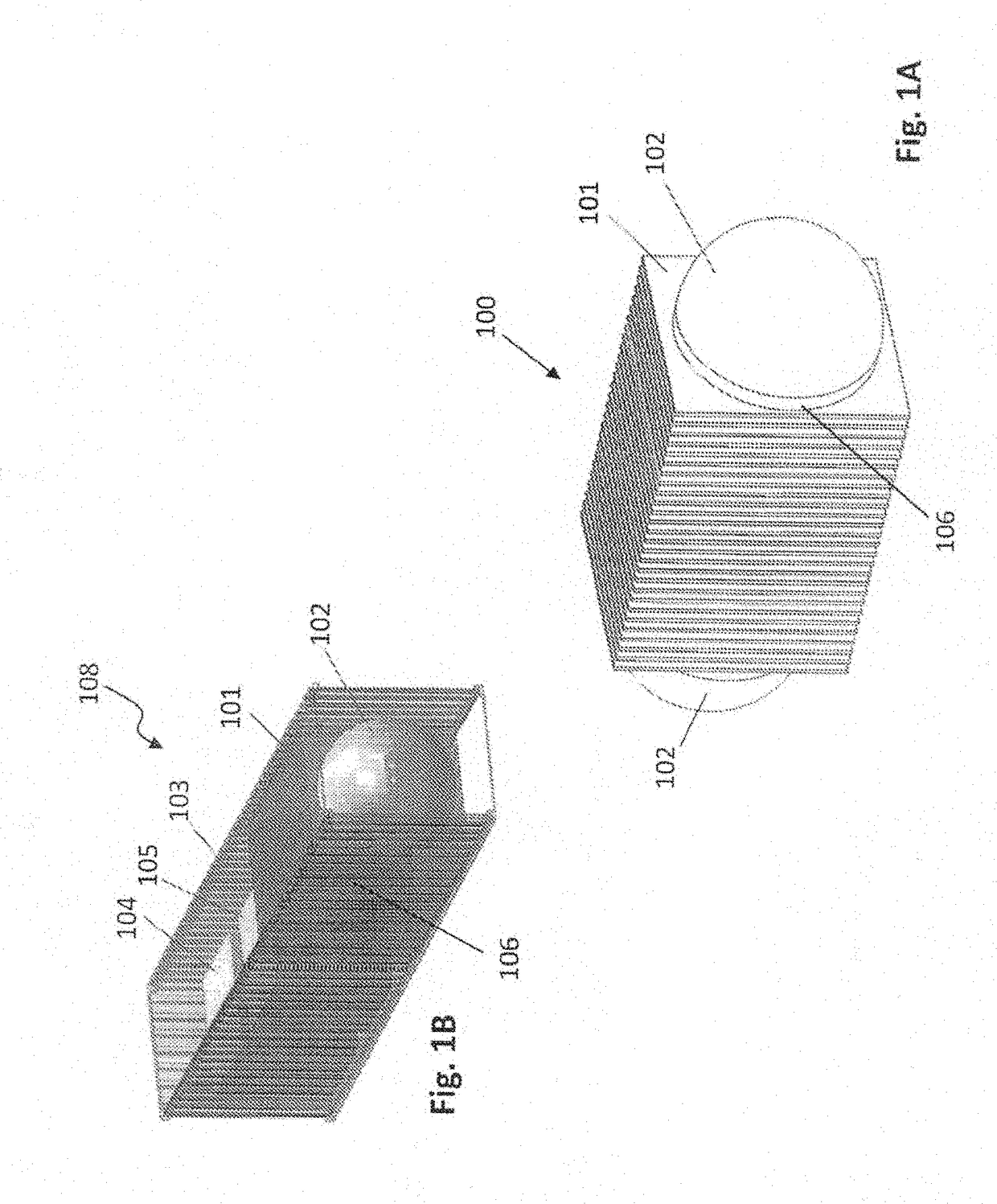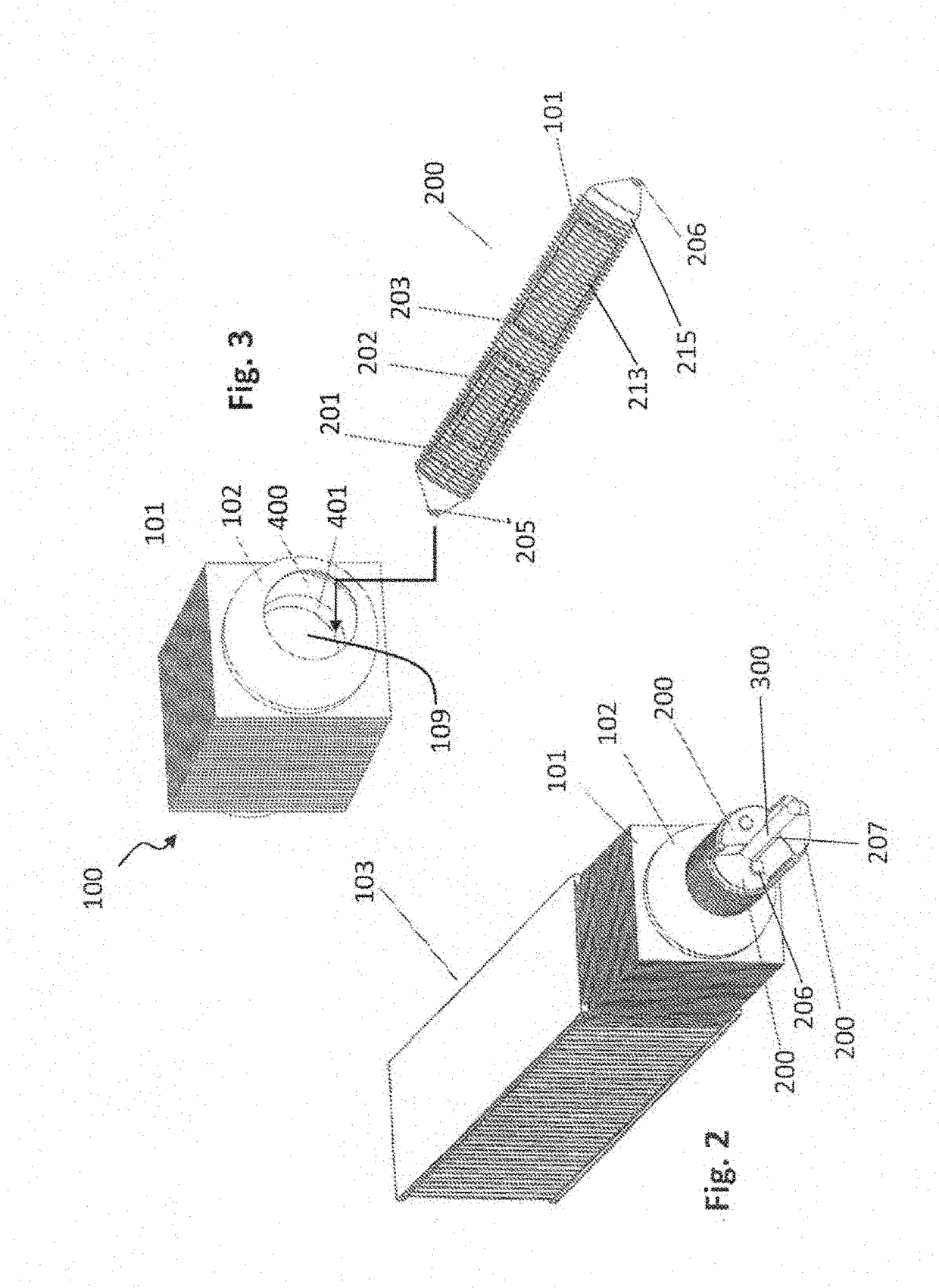Transportable sub-critical modules for power generation and related methods
a sub-critical module and power generation technology, applied in nuclear reactors, nuclear elements, greenhouse gas reduction, etc., can solve the problems of hydrogen accumulation, self-ignition, and inability to passively and effectively execute natural convective cooling, and achieve selective isotopic production and ease of replacement or refurbishment.
- Summary
- Abstract
- Description
- Claims
- Application Information
AI Technical Summary
Benefits of technology
Problems solved by technology
Method used
Image
Examples
Embodiment Construction
[0035]Reference will now be made in detail to the exemplary embodiments of the invention, examples of which are illustrated in the accompanying drawings. Wherever possible, the same reference numbers will be used throughout the drawings to refer to the same or like parts.
[0036]FIG. 1A illustrates a nuclear power generator 100, according to one exemplary embodiment of the present disclosure. As shown in FIG. 1A, nuclear power generator 100 may include a generally cylindrical body 106 and a pair of hemispherical heads 102 integrally formed with the proximal and distal ends of cylindrical body 106. Cylindrical body 106 and hemispherical heads 102 form a substantially sealed pressure containment that serves as a pressure boundary separating the internal components of nuclear power generator 100 from the environment. Cylindrical body 106 and hemispherical heads 102 also serve as radiation shielding from the nuclear components inside the pressure containment.
[0037]Nuclear power generator ...
PUM
 Login to View More
Login to View More Abstract
Description
Claims
Application Information
 Login to View More
Login to View More - R&D
- Intellectual Property
- Life Sciences
- Materials
- Tech Scout
- Unparalleled Data Quality
- Higher Quality Content
- 60% Fewer Hallucinations
Browse by: Latest US Patents, China's latest patents, Technical Efficacy Thesaurus, Application Domain, Technology Topic, Popular Technical Reports.
© 2025 PatSnap. All rights reserved.Legal|Privacy policy|Modern Slavery Act Transparency Statement|Sitemap|About US| Contact US: help@patsnap.com



